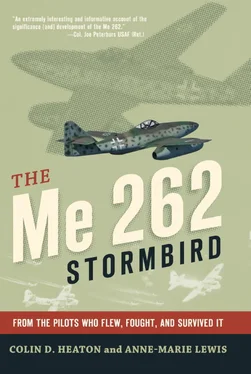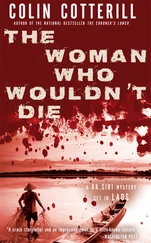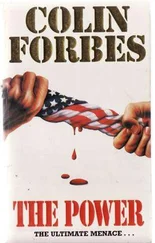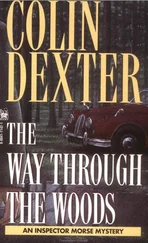Date Apr. 17, 1945
Unit II./JG-7
Cause Missing
Wk Nr Unk.
A/C ID N/A
Pilot Ofw Heinz Heinz Arnold#
Date Apr. 17, 1945
Unit JV-44
Cause Collision
Wk Nr Unk.
A/C ID N/A
Pilot Uffz Eduard Schallmoser
Date Apr. 17, 1945
Unit JV-44
Cause Crash take off
Wk Nr Unk.
A/C ID N/A
Pilot Obslt Johannes Steinhoff+
Date Apr. 18, 1945
Unit III./JG-7
Cause Shot down
Wk Nr Unk.
A/C ID N/A
Pilot Unk.#
Date Apr. 19, 1945
Unit III./JG-7
Cause Shot down
Wk Nr Unk.
A/C ID N/A
Pilot Unk.#
Date Apr. 19, 1945
Unit III./JG-7
Cause Shot down
Wk Nr Unk.
A/C ID N/A
Pilot Unk.#
Date Apr. 19, 1945
Unit III./JG-7
Cause Shot down
Wk Nr Unk.
A/C ID N/A
Pilot Unk.#
Date Apr. 19, 1945
Unit JV-44
Cause Shot down
Wk Nr Unk.
A/C ID N/A
Pilot Obfw Hans Grünberg
Date Apr. 19, 1945
Unit I./KG-54
Cause Shot down
Wk Nr Unk.
A/C ID N/A
Pilot Uffz Bruno Reischke*
Date Apr. 19, 1945
Unit I./KG-54
Cause Shot down
Wk Nr Unk.
A/C ID N/A
Pilot Lt Mai*
Date Apr. 19, 1945
Unit 12/JG-7
Cause Damaged by B-26
Wk Nr Unk.
A/C ID N/A
Pilot Unk.+
Date Apr. 20, 1945
Unit JV-44
Cause Crash landed [52]
Wk Nr Unk.
A/C ID N/A
Pilot Maj. Gerhard Barkhorn
Date Apr. 20, 1945
Unit III./KG-54
Cause Shot down
Wk Nr Unk.
A/C ID N/A
Pilot Unk. Unteroffizier *
Date Apr. 22, 1945
Unit JV-44
Cause Shot down
Wk Nr Unk.
A/C ID N/A
Pilot Obst Günther Lützow
Date Apr. 24, 1945
Unit I./JG-7
Cause Crashed
Wk Nr Unk.
A/C ID N/A
Pilot Unk.*
Date Apr. 25, 1945
Unit 9/JG-7
Cause Force landing [53]
Wk Nr 500071
A/C ID N/A
Pilot Fhr Hans-Guido Mutke
Date Apr. 25, 1945
Unit 9/JG-7
Cause Strafed while landing
Wk Nr Unk.
A/C ID N/A
Pilot Ofw Hermann Buchner
Date Apr. 25, 1945
Unit JV-44
Cause Shot down [54]
Wk Nr Unk.
A/C ID N/A
Pilot Genlt Adolf Galland+
Date Apr. 26, 1945
Unit JV-44
Cause Shot down
Wk Nr Unk.
A/C ID N/A
Pilot Maj. Georg-Peter Eder
Date Apr. 26, 1945
Unit JG-7
Cause Shot down by Soviets
Wk Nr Unk.
A/C ID N/A
Pilot Unk.#
Date Apr. 27, 1945
Unit JG-7
Cause Shot down by Soviets
Wk Nr Unk.
A/C ID N/A
Pilot Unk.#
Date Apr. 27, 1945
Unit JG-7
Cause Shot down
Wk Nr Unk.
A/C ID N/A
Pilot Lt Ernst-Rudolf Geldmacher*
Date Apr. 28, 1945
Unit III./KG-54
Cause Fire takeoff
Wk Nr Unk.
A/C ID B3+Red 1
Pilot Hptm Kornagel*
Date Apr. 29, 1945
Unit III./KG-54
Cause Missing
Wk Nr Unk.
A/C ID B3+Red 3
Pilot Unk.#
Date Apr. 29, 1945
Unit III./KG-54
Cause Shot down
Wk Nr Unk.
A/C ID B3+Red 2
Pilot Hptm Spadiut#
Date Apr. 29, 1945
Unit III./KG-54
Cause Shot down
Wk Nr Unk. B3+Red 2
A/C ID
Pilot Lt Paukner#
Date Apr. 29, 1945
Unit 1/JG-7
Cause Missing
Wk Nr Unk.
A/C ID N/A
Pilot Lt Fritz Kelb#
Date Apr. 30, 1945
Unit I./KG-54
Cause Soviet flak
Wk Nr Unk.
A/C ID N/A
Pilot Unk.#
Date Apr. 30, 1945
Unit KG-51
Cause Shot down
Wk Nr Unk.
A/C ID N/A
Pilot Lt Schimmel*
Date May 6, 1945
Unit KG-51
Cause Shot down
Wk Nr Unk.
A/C ID N/A
Pilot Lt Strothman*
Date May 7, 1945
Unit KG-51
Cause Shot down
Wk Nr Unk.
A/C ID N/A
Pilot Lt Poling*
Date May 7, 1945
Unit 1/JG-7
Cause Surrendered
Wk Nr 500210
A/C ID Yellow 17
Pilot Lt Hans Dorn
Date May 8, 1945
Unit 1/JG-7
Cause Surrendered
Wk Nr 112372
A/C ID Yellow 7
Pilot Uffz Günther Engle
Date May 8, 1945
Unit 1/JG-7
Cause Surrendered
Wk Nr 111690
A/C ID White 5
Pilot Lt Friedrich-Wilhelm Schülter
Date May 8, 1945
Unit 1/JG-7
Cause Surrendered
Wk Nr 5000443
A/C ID Yellow 5
Pilot Uffz Anton Schöppler
Date May 8, 1945
Unit I./KG-54
Cause Surrendered
Wk Nr Unk.
A/C ID N/A
Pilot None
Date May 8, 1945
Unit I./KG-51
Cause Surrendered
Wk Nr Unk.
A/C ID N/A
Pilot Hptm Rudolf Abrahamczik
Date May 8, 1945
Unit I./KG-51
Cause Surrendered
Wk Nr Unk.
A/C ID N/A
Pilot Lt Anton Haeffner
Date May 8, 1945
Unit I./KG-51
Cause Surrendered
Wk Nr 500200
A/C ID X
Pilot Lt Fröhlich
Date May 8, 1945
Unit I./KG-51
Cause Crash landed
Wk Nr Unk.
A/C ID N/A
Pilot Lt Wilhelm Batel
Date May 8, 1945
Unit I./KG-54
Cause Surrendered
Wk Nr Unk.
A/C ID N/A
Pilot Unk.
Date May 8, 1945
JG-7 PERMANENT PERSONNEL
Geschwaderkommodore
Oberstleutnant Johannes Steinhoff, 4 December 1944
Major Theodor Weissenberger, 1 January 1945
Major Rudolf Sinner (acting), 19 February 1945
Gruppenkommandeure
I./JG 7
Hauptmann Gerhard Baeker, August 1944
Major Theodor Weissenberger, 25 November 1944
Major Erich Rudorffer, 14 January 1945
Oberleutnant Fritz Stehle (acting), April 1945
Major Wolfgang Späte, April 1945
II./JG 7
Major Hermann Staiger, 12 January 1945
Hauptmann Burkhard, February 1945
Major Hans Klemm, 15 April 1945 - 8 May 1945
III./JG 7
Major Erich Hohagen, 19 November 1944
Major Rudolf Sinner, 1 January 1945
Hauptmann Johannes Naumann, 5 April 1945
IV./JG 7
Oberstleutnant Heinrich Bär, 3 May 1945
Pilots Attached to JG 7
Major Heinrich Ehrler
Leutnant Karl Schnörrer
Oberleutnant Walter Schuck
Oberstleutnant Johannes Steinhoff
Oberleutnant Hans Waldmann
Major Theodor Weissenberger
Leutnant Rudolf “Rolf” Glogner (Me 163 B Komet pilot with JG-300)
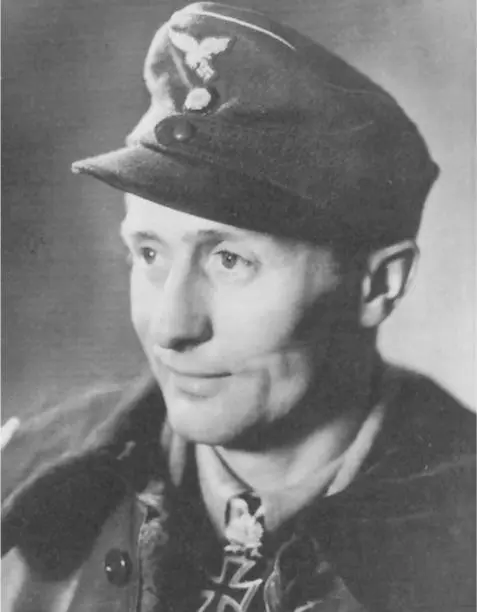
Oberst Johannes Steinhoff flew with JG-26, JG-52, JG-77, JG-7, and JV-44 and scored 176 victories, 5 in the Me 262 with JG-7 and JV-44. He received the Knight’s Cross with Oak Leaves and Swords after a stellar career on every front. He retired as a generalleutnant and NATO commander and became a prolific author on World War II. Johannes Steinhoff
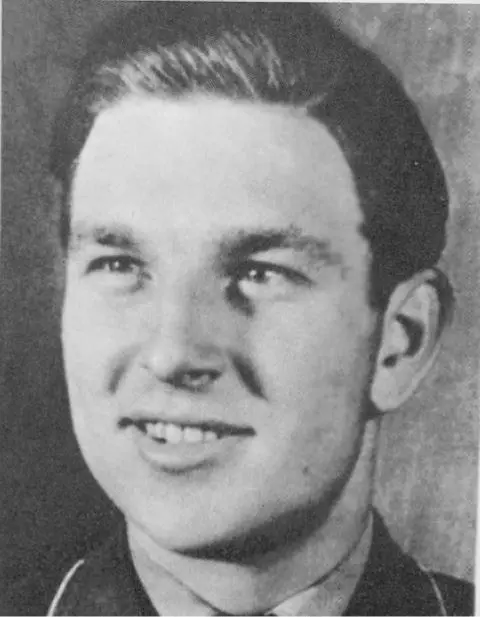
Major Gerhard Barkhorn scored 301 kills with 2 possibly in the Me 262. He flew with JG-52, JG-6, and JV-44 until a landing accident nearly broke his neck. He was awarded the Knight’s Cross with Oak Leaves and Swords, but the war ended before he could be approved for the Diamonds. Ray Toliver
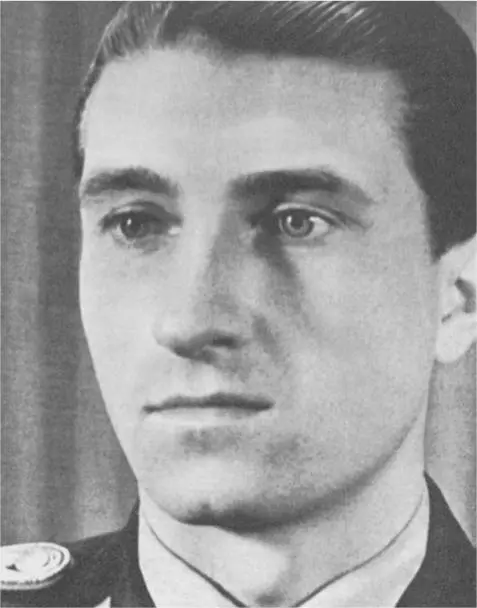
Major Walter Nowotny, JG-54, JG-101, was the appointed leader of Kommando Nowotny (later JG-7). “Nowi” received the Knight’s Cross with Oak Leaves, Swords, and Diamonds, scored 258 victories, with the last 3 scored in the Me 262 the day he was killed in close combat by Edward R. “Buddy” Haydon while trying to land at Achmer. Galland, Eder, and others, witnessed the event. Ray Toliver

Major Erich Rudorffer scored 222 victories, 12 in the Me 262, while flying with JG-4, JG-54, and JG-7. He also had a British submarine kill. Rudorffer was shot down over a dozen times, making nine parachute jumps. Ray Toliver
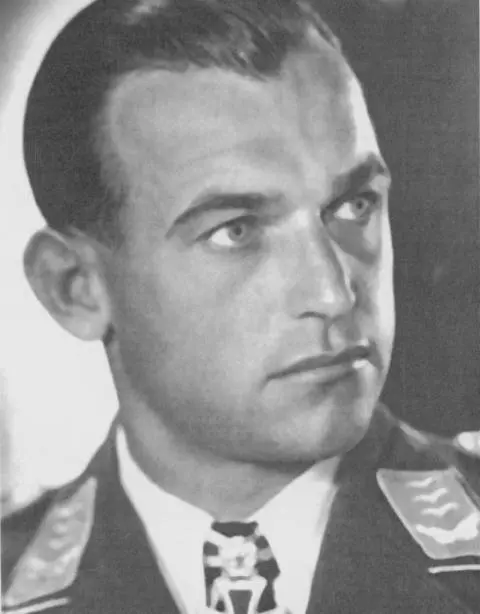
Oberstleutnant Heinrich Bär shot down 223 aircraft with 16 confirmed in the Me 262. He flew with JG-51, JG-77, JG-1, JG-7, and JG-3 before joining JV-44. He assumed command after Galland was shot down and wounded on April 26, 1945, receiving the Knight’s Cross, Oak Leaves and Swords. Ray Toliver
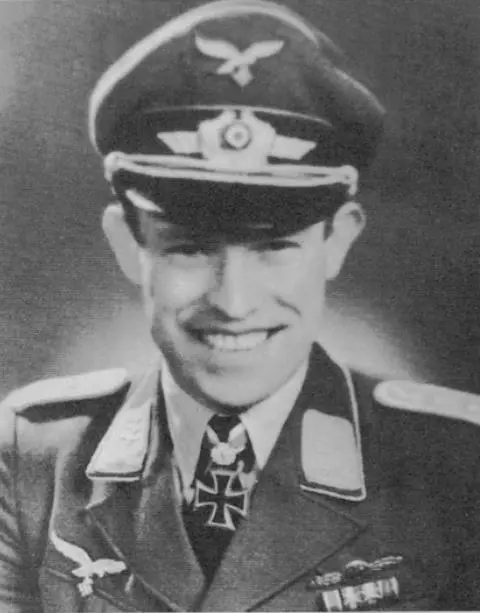
Major Heinrich Ehrler scored 208 victories, 8 in the Me 262, and received the Knight’s Cross with Oak Leaves. He flew with JG-5 and JG-7, flying jets following the Tirpitz disaster and resulting in a court-martial. Ray Toliver
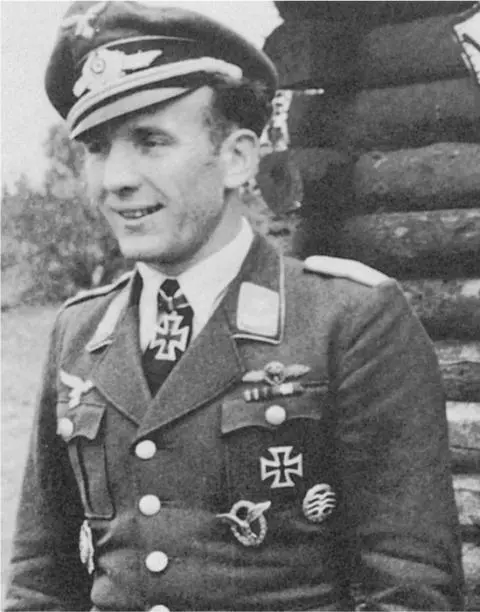
Major Theo Weissenberger scored 208 victories flying with JG-5 and later JG-7, with his last 8 kills in the Me 262. He received the Knight’s Cross with Oak Leaves and was kommodore of JG-7 following Steinhoff’s departure. Ray Toliver

Oberleutnant Walter Schuck scored 206 victories with JG-5 and later JG-7, with 8 kills in the Me 262. Leading a somewhat charmed life, he survived two bailouts from crippled jets, one being the victim of Joe Peterburs, who became his friend after the war. Ray Toliver
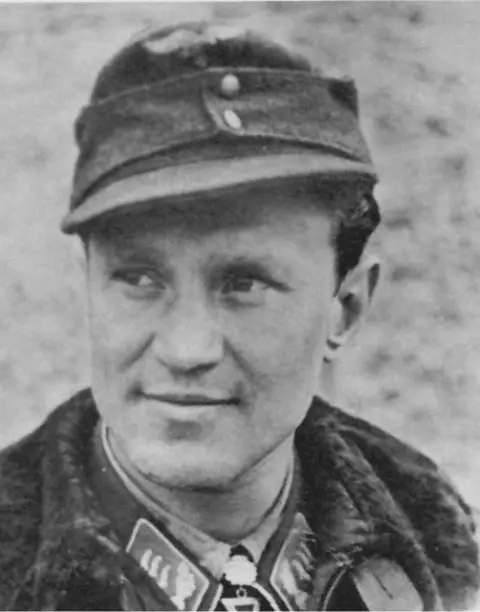
Hauptmann Walter Krupinski received the Knight’s Cross with Oak Leaves for shooting down 197 aircraft. His career saw him fly with JG-52, JG-26, JG-4, JV-44, and JG-11. He scored two kills confirmed in the Me 262, and he retired as a generalleutnant in the West German Air Force as a qualified F-15 pilot. Walter Krupinski
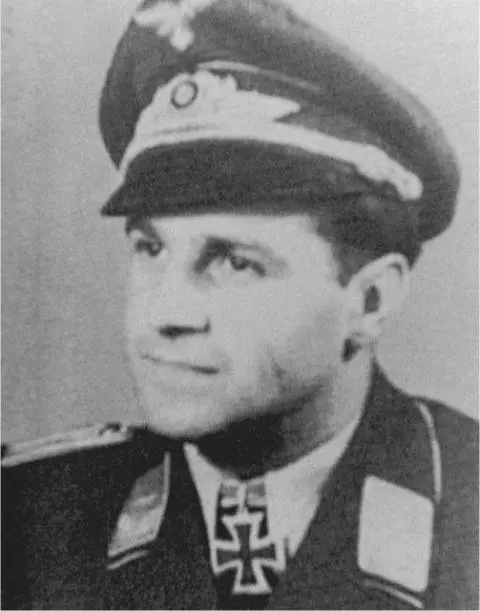
Hauptmann Franz Shall scored 16 kills in the Me 262 for a wartime total of 133. He flew with JG-52, Kommando Nowotny , and JG-7, receiving the Knight’s Cross. He was shot down in the jet twice, once the day that Nowotny was killed over Achmer. Ray Toliver
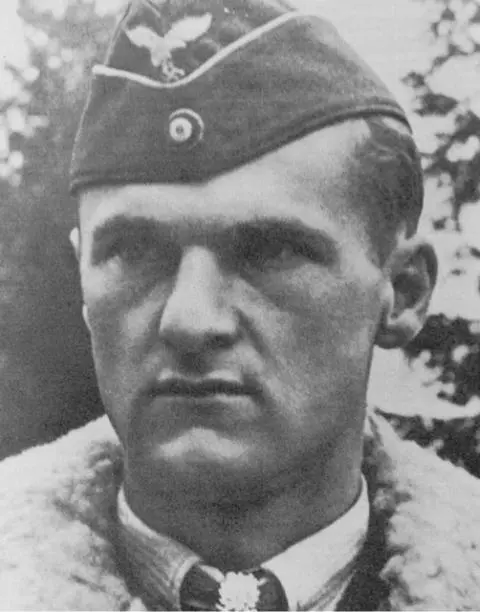
Oberst Günther Lützow flew in the Spanish Civil War, and by the time of his death had scored 110 victories with JG-3 and JV-44, with 2 kills in the jet (perhaps more), receiving the Knight’s Cross with Oak Leaves and Swords. He was the leader of the Fighter’s Revolt that almost ended his career and the careers (if not lives) of Galland, Steinhoff, and others. Ray Toliver
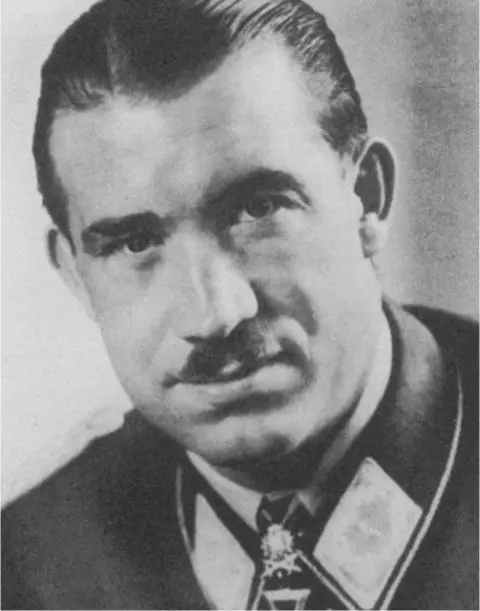
Generalleutnant Adolf Galland flew in the Spanish Civil War and commanded JG-26 before becoming General of the Fighters. He scored 104 victories, the last 7 scored in the Me 262. Galland finished the war with the Knight’s Cross, Oak Leaves, Swords, and Diamonds, and he has the distinction of being the highest-ranking combat squadron leader in history, as a three-star general by the age of thirty-three. Ray Toliver

Hauptmann (later Major ) Georg-Peter Eder (second from left, facing right) and Major Erich Rudorffer (far right) in discussion on Rudorffer’s transfer to the Western Front. After Nowotny’s death, Eder temporarily became kommodore until Johannes Steinhoff took over; Steinhoff was replaced by Weissenberger. Rudorffer would later become kommandeur of I/JG-7 on January 14, 1945. Ray Toliver
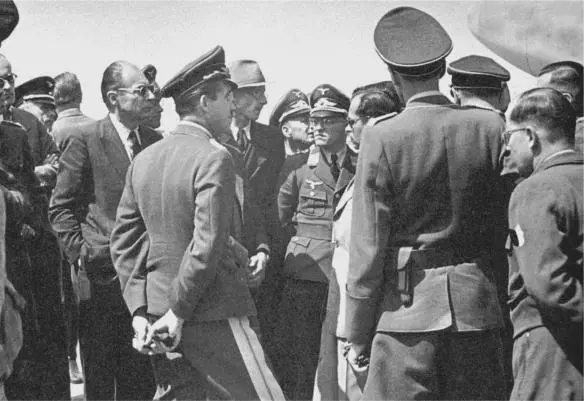
Adolf Galland at Lechfeld during the time of his test flight. He was accompanied by all of the engineers, senior military officers, and even Adolf Hitler and Prof. Willi Messerschmitt in July 1943. Ray Toliver
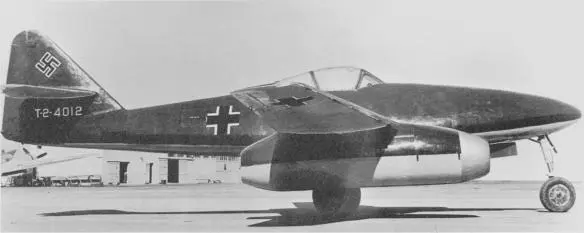
The vaunted Me 262 in full profile as a clean straight fighter version. Ray Toliver.
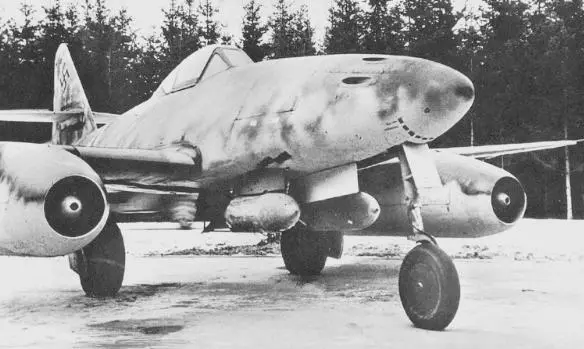
The Me 262 in the bomb-carrying configuration. Every pilot dreaded the idea of carrying external ordinance, as the increased drag made the jet more vulnerable to air attack. Ray Toliver
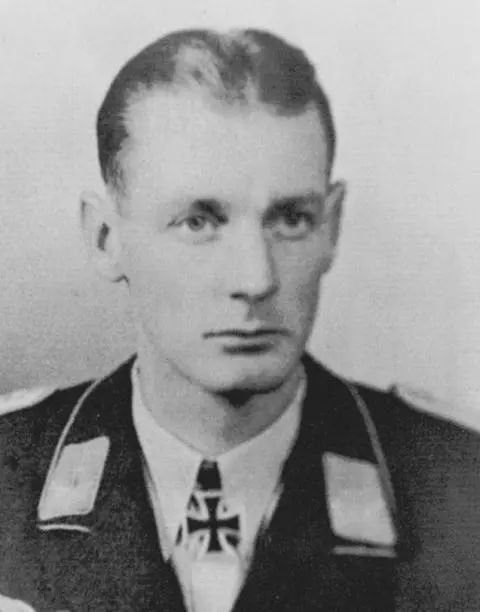
Oberleutnant Rudolf Rademacher shot down ninety-seven aircraft with JG-54 and JG-7, with his last sixteen kills in the Me 262. He received the Knight’s Cross and survived the war. Ray Toliver

Major Wolfgang “Bombo” Schenck received the Knight’s Cross with Oak Leaves as a fighter-bomber and ground attack pilot, the most dangerous duty. He led Kommando Schenck to prove the Me 262 bomber concept and even admitted that the Arado Ar 234 was a better aircraft for bombing. Wolfgang Schenck
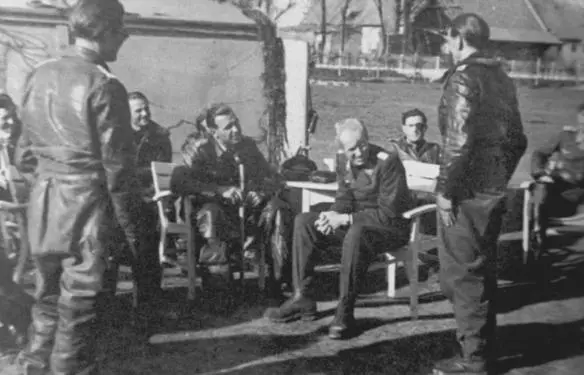
Heinz Bär (left of center, seated) apparently dressing down Eduard Schallmoser for ramming another enemy and losing the fighter. This may have been the day after he returned following his landing in his mother’s garden. The pilot standing to the far left is more than likely Johannes Steinhoff. Ray Toliver
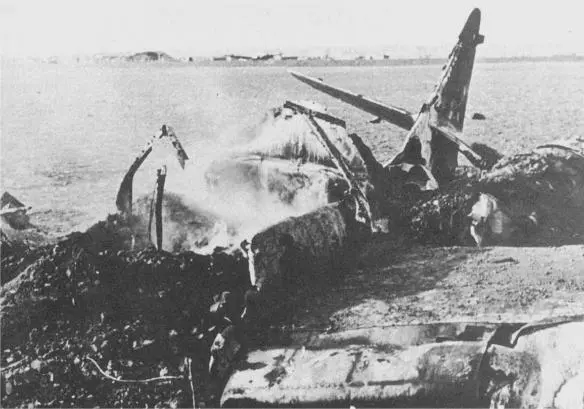
Steinhoff’s Me 262. The heat was so intense it melted the fuselage, and due to explosions of the fuel, rockets, and 30mm ammunition, parts of the jet were found a half mile away. Ray Toliver
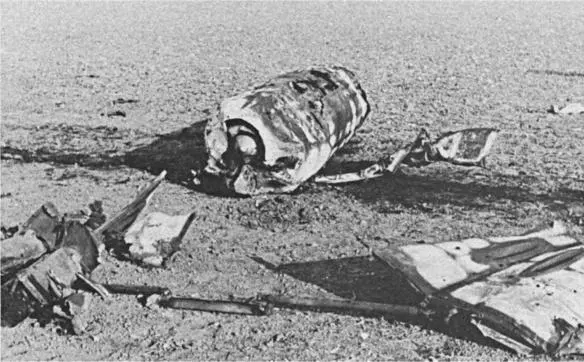
This second photo of the Steinhoff crash shows one of the Jumo 004 engines, dismounted due to the explosion that ripped the wing off. Ray Toliver
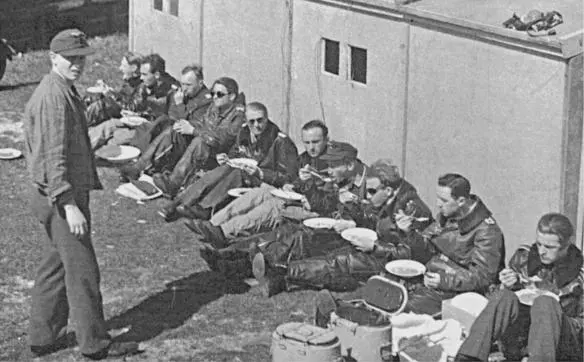
Late February 1945 during the forming stage of JV-44, the first ten pilots have a meal. Steinhoff is fourth from right, wearing a cap. JV-44, like most jet units, was even looser with regard to regulations and military formality. Junior enlisted men and officers ate together, without much distinction. “Saluting even became a rarity,” according to Steinhoff. Ray Toliver
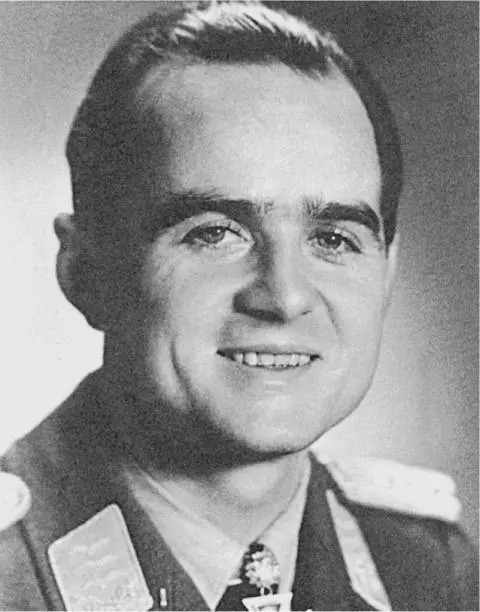
Major Wolfgang Späte scored ninety-nine confirmed victories with JG-54, JG-400, JG-7, and JV-44, with five kills in the jet. He was also the founding commander of JG-400 using the Me-163B Komet rocket fighter. He later flew with JG-7 and JV-44 with the Knight Cross and Oak Leaves for distinguished service. Wolfgang Späte
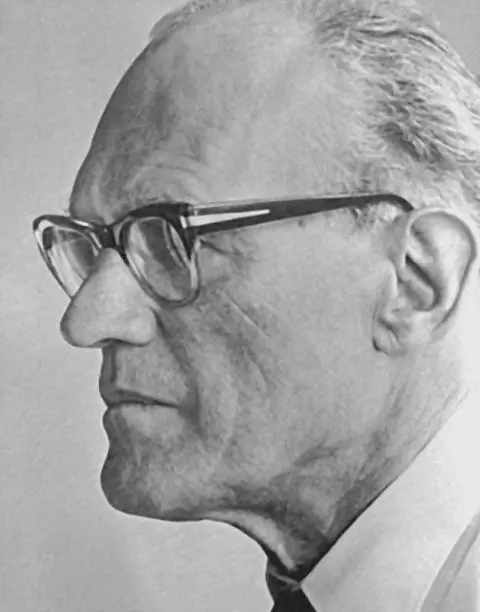
Prof. Ing. Willi Messerschmitt, the genius behind some of history’s finest aircraft. Ray Toliver
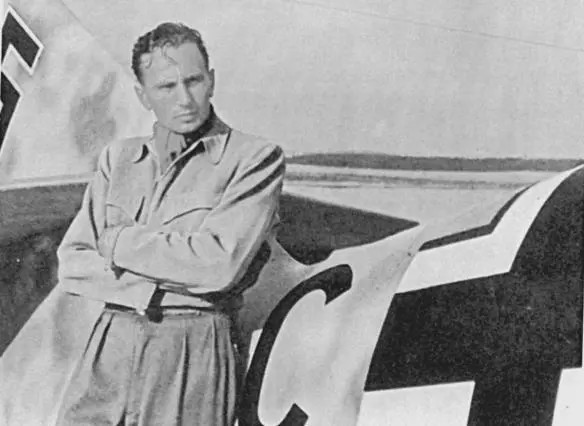
Perhaps the greatest test pilot on either side of the war, Fritz Wendel standing next to the Me 262 “tail dragger” that started the entire jet revolution. Jeffrey L. Ethell

The radar-guided two-seater version of the Me 262 operated by NJG-11 and Kommando Welter . Ray Toliver
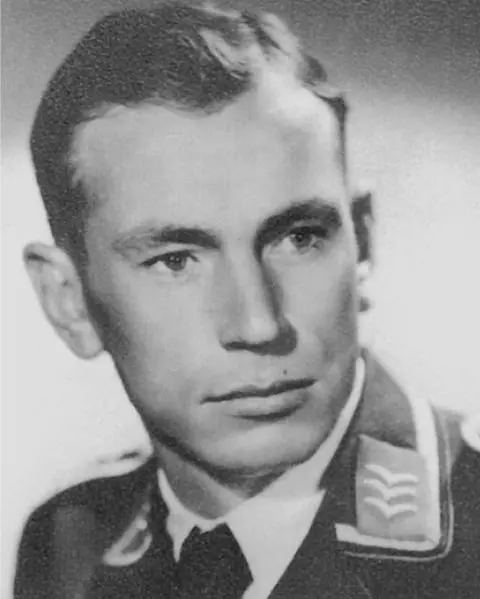
Oberfeldwebel Hermann Buchner started the war as a fighter and later was a ground attack pilot with JG-2 and SG-2, flying into history scoring fifty-eight kills, of which twelve were scored flying the Me 262. He finished the war wearing the Knight’s Cross. Hermann Buchner
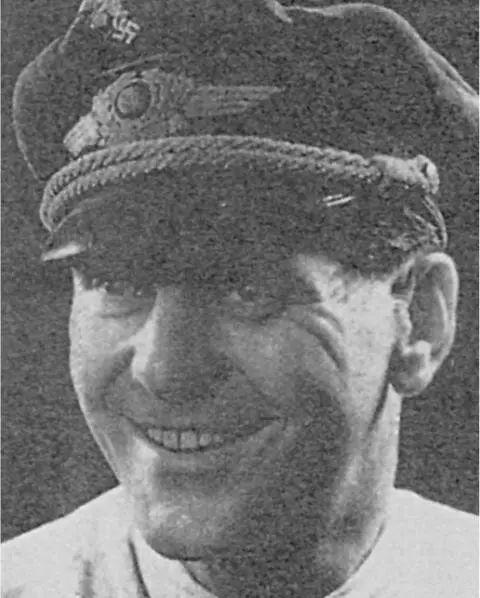
Oberleutnant Kurt Welter, perhaps the highest-scoring jet pilot of the war (and in history), with most of his kills flying single-seat day fighters, including the Me 262. He flew with JG-300, the Wilde Sau , and later formed his unit of night fighters. Welter scored sixty-three kills, with at least twenty in the Me 262 single seater. He was the lowest-ranking officer ever authorized to form and command a fighter unit. Ray Toliver

Major Wilhelm Herget was an old-timer ZG-76, NJG-3, JG-7, and JV-44, scoring seventy-three victories, fifty-eight as a night fighter, finishing the war flying jets. He received the Knight’s Cross with Oak Leaves. Ray Toliver
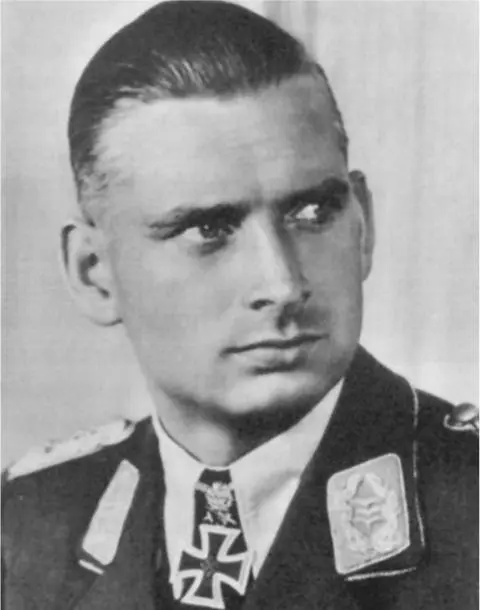
Oberst Hajo Herrmann was already a legend as a Spanish Civil War and World War II bomber pilot when he became a night fighter, creating the Wilde Sau in July 1944. He spent a decade in the Soviet gulags and became a successful attorney following his repatriation. He was awarded the Knight’s Cross, Oak Leaves and Swords. Hajo Herrmann
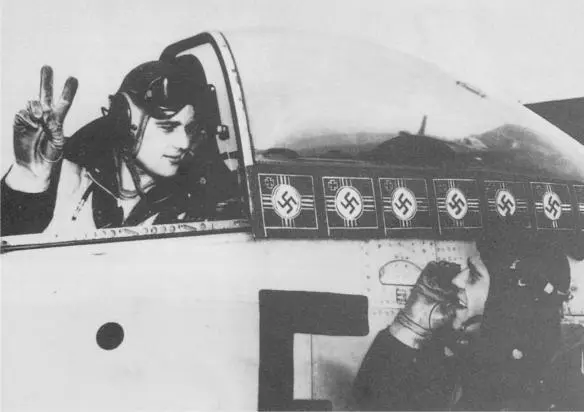
Captain Urban L. “Ben” Drew following his two Me 262 kills. He received the Air Force Cross and ace status four decades later, thanks to Georg-Peter Eder. The two became close friends until Eder’s death from cancer in 1986. Ray Toliver

Group Capt. J. B. Wray, who was an established killer of Me 262s flying the Hawker Tempest. Ray Toliver
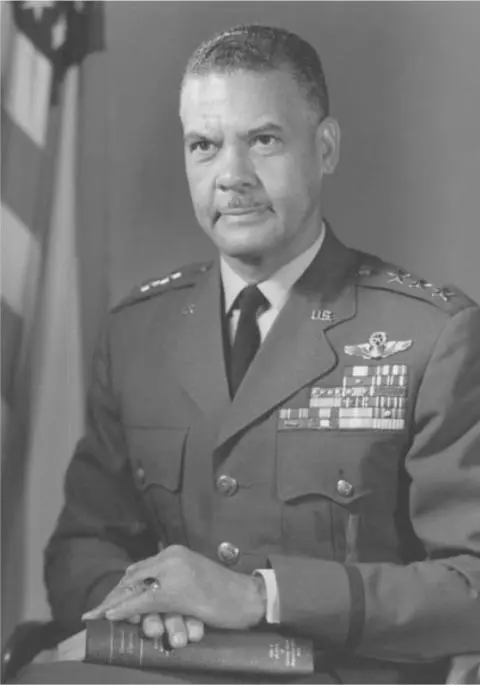
General Benjamin O. Davis, the founding commander of the 99th Pursuit Squadron and later the 332nd Fighter Group, better known as the Tuskegee Airmen. Benjamin O. Davis
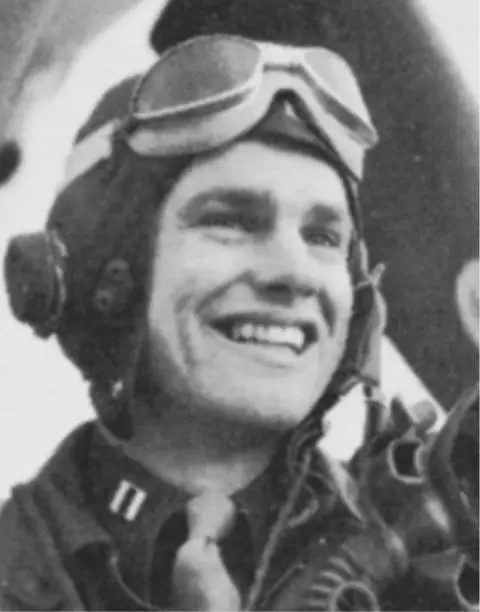
Major Donald Bochkay, commanding officer of the 363rd Fighter Squadron, 357th Fighter Group, during the period of his jet encounters and two jet kills on February 9 and April 18, 1945. Ray Toliver
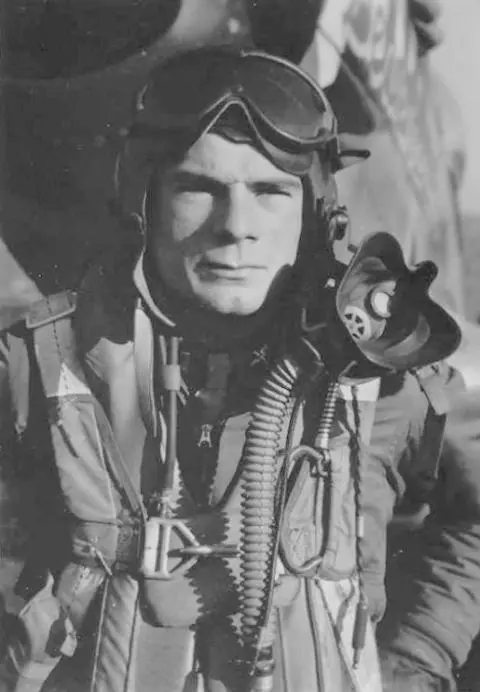
Joe Peterburs as a P-51 fighter pilot. His greatest day was when he shot down one of Germany’s premier aces and jet pilots, Walter Schuck. Peterburs and Schuck became friends following a meeting organized by Kurt Schulze. Joe Peterburs
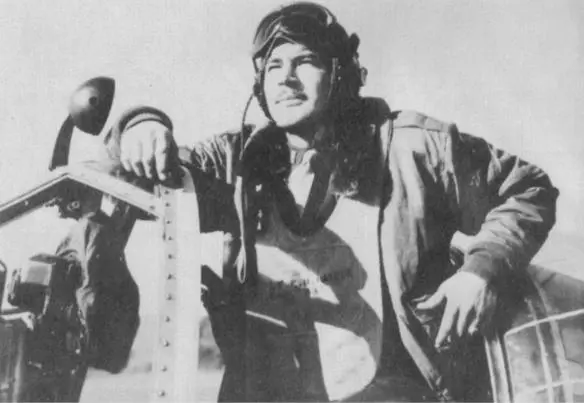
First Lieutenant (later Colonel) Edward R. “ Buddy” Haydon of the 357th Fighter Group, who shared the kill of Walter Nowotny on November 8, 1944, with Capt. Ernest Fiebelkorn of the 20th Fighter Group. Edward R. Haydon
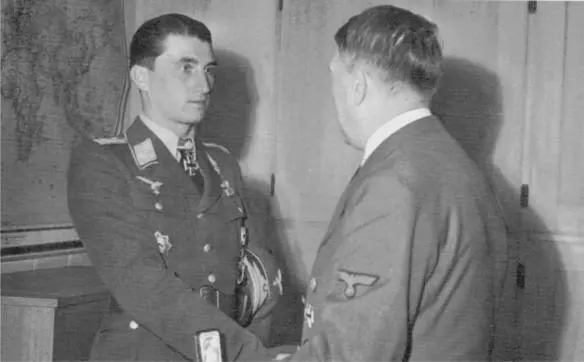
Hauptmann (later Major ) Walter Nowotny receiving the Diamonds to his Knight’s Cross, Oak Leaves and Swords from Adolf Hitler in 1943. Rudolf Nowotny
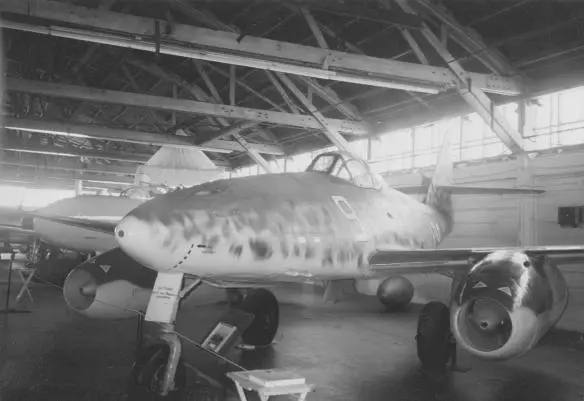
Me 262 in the Air Museum in Chino, California. Norman Melton
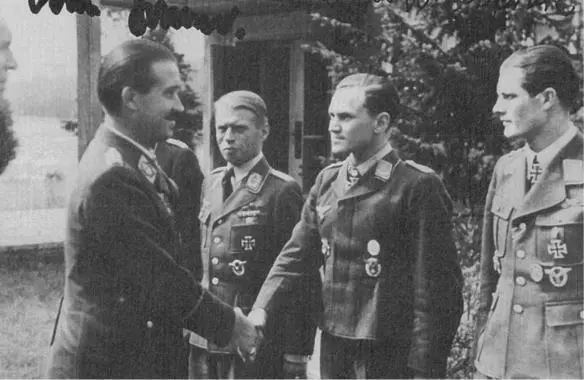
Adolf Galland welcoming the new recruits into JV-44 while shaking Krupinski’s hand. Oberst Hannes Trautloft is behind Galland’s left. Adolf Galland
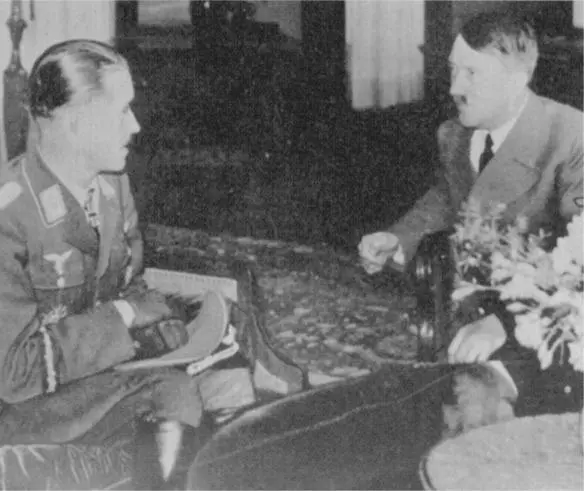
Galland during one of his meetings with Hitler following his receiving the Diamonds in 1942. Adolf Galland
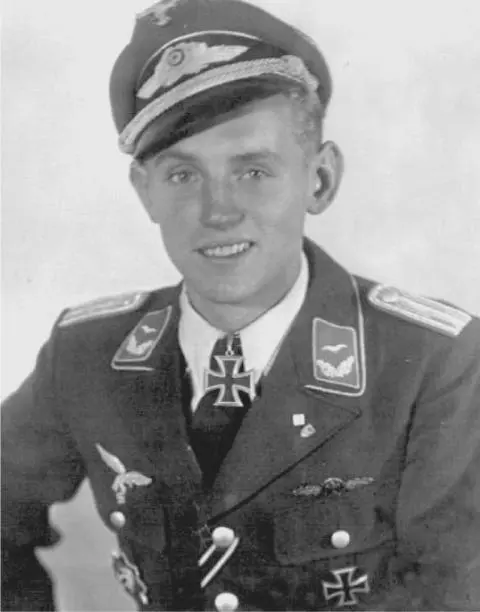
Major Erich Hartmann, a recipient of the Diamonds, was the world’s highest-scoring fighter ace. By the end of the war he had shot down 352 aircraft. He test flew and qualified in the Me 262, but decided not to join JG-7. His return to his unit JG-52 was a decision that would see him spend ten and a half years in Soviet captivity. Erich Hartmann
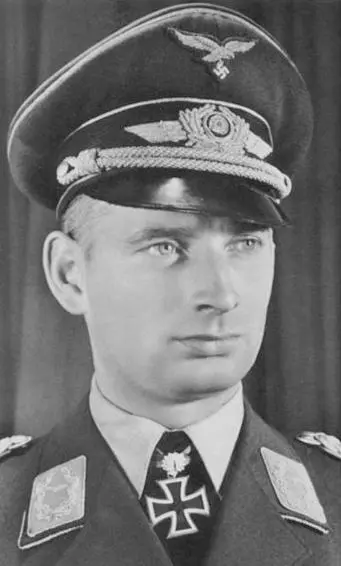
Oberst Hajo Herrmann was a bomber pilot in the Spanish Civil War and in World War II until June 1943. He created JG-300, the Wild Boar night fighters, and ended the war with the Knight’s Cross, Oak Leaves and Swords. He would join Hartmann and many thousands of others in the gulag system. Hajo Herrmann
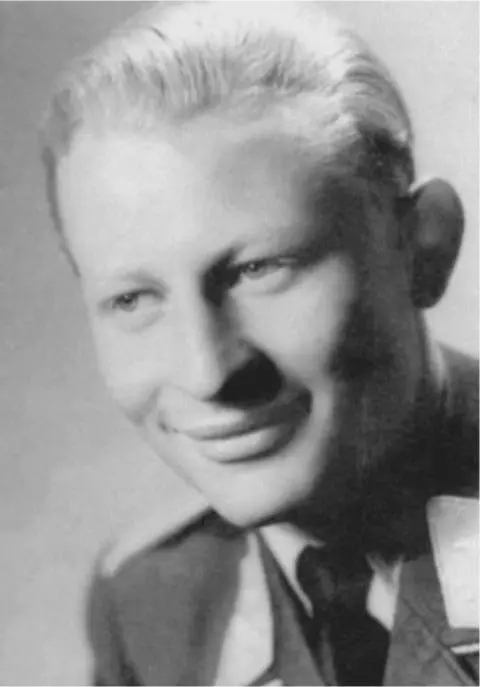
Leutnant Jorg Czypionka spent most of the war as an instructor pilot before joining Kurt Welter in Kommando Welter /10./NJG-11. He was one of the few Me 262 night fighter pilots to shoot down an RAF Mosquito bomber, which was the most elusive aircraft in the Allied inventory. Jorg Czypionka
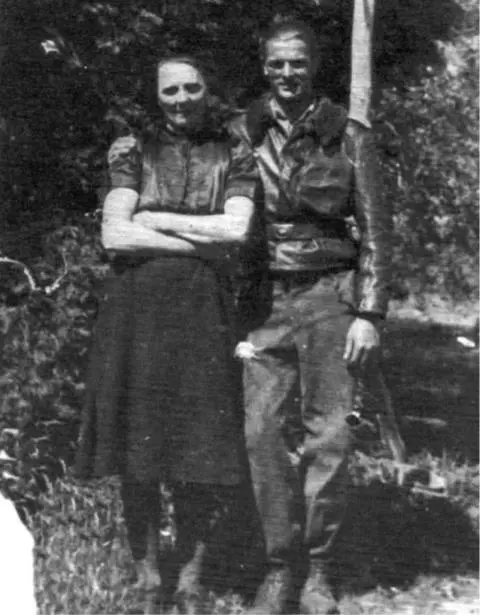
Unteroffizier Eduard Schallmoser with his mother after he parachuted out of his damaged Me 262 and landed in her garden, becoming tangled in the clothesline behind them. Although recruited into JV-44 by Steinhoff due to his natural abilities as a fighter pilot, he lost more jets than any other member of the unit by ramming enemy aircraft, earning him the nickname “Rammer.” Ray Toliver
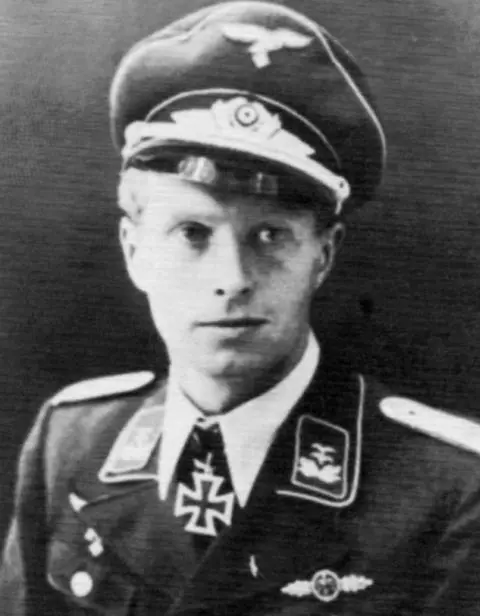
Major Erich Hohagen flew with JG-51, JG-2, and JG-7 and finished flying jets with JV-44. He earned the Knight’s Cross and scored fifty-six victories, of which thirteen were four-engine bombers. After Steinhoff’s crash he took over as the unit’s operations chief. Hohagen returned to the military and became a Brigadegeneral in the postwar air force. Erich Hohagen
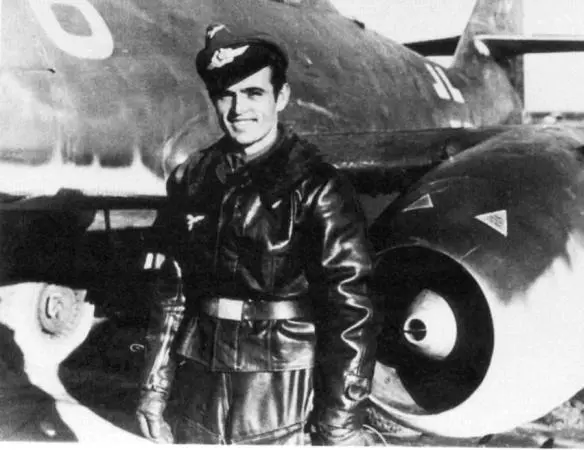
Oberfeldwebel Helmut Baudach flew jets with Kommando Nowotny and later JG-7, and scored twenty-one victories, including four four-engine bombers and five victories scored in the jet. He bailed out of his Me 262 (WNr. 110 781), striking his head against the vertical tail section, and died of the injury later the same day on February 22, 1945, while flying. Ray Toliver
Читать дальше
